#teleostei
Text
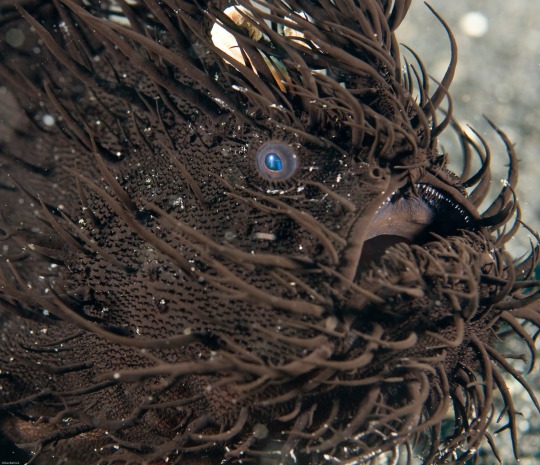
Hairy frogfish (Antennarius striatus)
Photo by Mike Bartick
#hairy frogfish#antennarius striatus#antennarius#antennariinae#antennariidae#antennarioidei#lophiiformes#acanthopterygii#teleostei#actinopterygii#osteichthyes#vertebrata#chordata
2K notes
·
View notes
Text
Lately, Professor Pictet has carried their existence one sub-stage further back; and some palaeontologists believe that certain much older fishes, of which the affinities are as yet imperfectly known, are really teleostean.
"On the Origin of Species by Means of Natural Selection, or the Preservation of Favoured Races in the Struggle for Life" - Charles Darwin
#book quote#the origin of species#charles darwin#nonfiction#francois jules pictet de la rive#teleostean#fish#palaeontology#teleostei
0 notes
Text

A new diminutive subterranean eel loach species of the genus Pangio (Teleostei: Cobitidae) from Southern India
REMYA L SUNDAR+ C.P. ARJUN+ ARYA SIDHARTHAN+ NEELESH DAHANUKAR+ RAJEEV RAGHAVAN
Abstract
A second subterranean species of Pangio is described from an old dug-out well in Kerala, Southern India.
The new species, Pangio pathala is unique within the genus in possessing the highest number (27) of caudal vertebrae.
Pangio pathala is distinguished from P. bhujia, the only subterranean Pangio species known so far, in having four pectoral-fin rays (vs. three), five anal-fin rays (vs. six), 67 vertebrae (40 abdominal and 27 caudal vertebrae) (vs. 62–63), and a raw genetic distance of 8.1–8.7% in the mitochondrial cytochrome oxidase subunit 1 gene.
This paper also provides an additional record of Pangio bhujia from a location 40 km south of the type locality.
Read the paper here:
A new diminutive subterranean eel loach species of the genus Pangio (Teleostei: Cobitidae) from Southern India | Zootaxa (mapress.com)
786 notes
·
View notes
Text
ok so this isnt a promise to make content. but my mom is always telling me i should become a youtuber and i think having a secondary thing im doing besides just having my job applications ignored might really help me rn!!!!!
SO. if I were to. I dunno make an informative powerpoint video about something related to my degree (biology) (Im a biologist)
feel free to send an ask if there's something else you'd be interested in learning more about!
I know the most about zoology, ecology, and conservation.
But if it's something I don't know about I might be able to learn more myself with some research!
470 notes
·
View notes
Text
I Mosasauri erano mangiatori schizzinosi, lo suggerisce una nuova ricerca
Una ricostruzione della vita di Gavialimimus almaghribensis che caccia un banco di teleostei.
Un team di paleontologi dei Paesi Bassi, Canada e Regno Unito ha esaminato i segni di usura sui denti di diverse specie di mosasauri, grandi rettili acquatici del tardo Cretaceo che occupavano una serie di nicchie ecologiche all’interno degli ecosistemi marini.
I mosasauri erano un gruppo di grandi…

View On WordPress
0 notes
Text
I PESCI DI ACQUA DOLCE
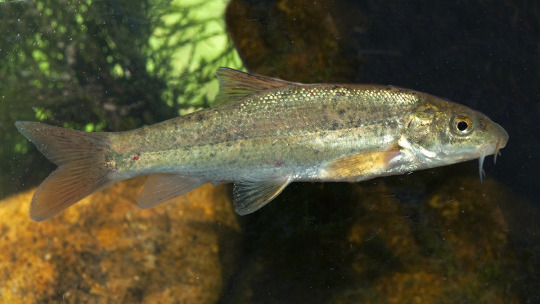
Barbus samniticus - Photo 154312968, (c) Riccardo Novaga
https://uk.inaturalist.org/taxa/1277073-Barbus-samniticus
Da poco hanno scoperto in Abruzzo una nuova specie di pesce, il Barbo sannitico (Barbus samniticus ex-tyberinus).
Questa specie popola tratti intermedi e collinari dei fiumi appenninici insieme ad altre specie italiane tipiche della zona del barbo: Sarmarutilus rubilio, Telestes muticellus and Squalius squalus (Ref. 123793).
In realtà non si è scoperto nulla, perché questo è il primo pesce che ho pescato dietro casa diversi anni fa, ma ovviamente per le persone senza competenze specifiche era considerato un barbo come tanti altri che ce ne sono nei fiumi italiani. Con nuovi studi e soprattutto anche grazie alla ricerca sul DNA di questi pesci adesso ha un nome tutto suo.
Barbus samniticus
Lorenzoni, Carosi, Quadroni, De Santis, Vanetti, Delmastro & Zaccara, 2021
Classification / Names
Teleostei (teleosts) > Cypriniformes (Carps) Cyprinidae (Minnows or carps) > Barbinae
Etymology: Barbus: Latin, barbus barbel (Ref. 45335); samniticus: Named for Samnites, ancient Italic people who settled in the type locality
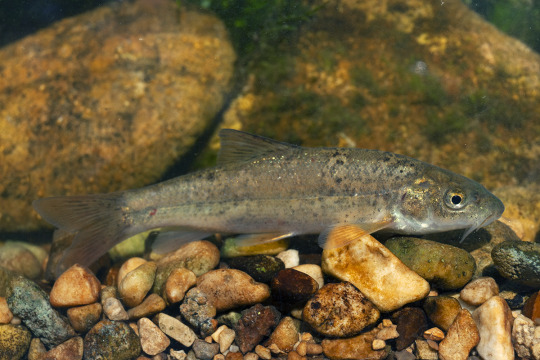
Barbus samniticus - Photo 154312959, (c) Riccardo Novaga
Voi sapete come fanno i pesci di acqua dolce a colonizzare nuovi habitat e come fa la stessa specie ad essere presente in luoghi diversi dove non c'è un collegamento tra i corsi d'acqua?
Io me lo sono chiesto.
Consideriamo che le specie di acqua dolce hanno degli antenati in mare, che un po' alla volta si sono adattate e sono state capaci di risalire i fiumi. Se prendiamo l'Europa, ci sono quattro principali zone che si succedono dalla sorgente alla foce: la zona della trota, del temolo, del barbo e della carpa.
Generalmente a delineare l'areale delle specie è il bacino idrologico. Ad esempio, contando che nel pleistocene il Po sfociava molto più a sud, a livello della fossa meso-adriatica, il delta collegava i corsi d'acqua dell'Italia peninsulare con quelli balcanici, questo ha fatto sí che ci sia una certa omogeneità nelle popolazioni di pesci tra le coste dell'Adriatico.
Attraverso questo modello, quando si trovano le stesse specie di pesci in aree adesso separate, è da pensare che in passato c'era un collegamento geologico, che può essere anche molto antico. Da quel momento poi si sono sviluppate le nuove speciazioni che ne hanno diversificato le caratteristiche regionali.
Non solo. Le uova di alcuni pesci hanno adattamenti per farle aderire ai trampolieri (In Italia si parla spesso per il rischio di estinzione del Fratino o del Cavaliere d'Italia, minacciati persino dai grandi concerti commerciali). Quando queste splendide creature camminano tra laghi, stagni e fiumi, poi volando e spostandosi diffondono le uova in nuovi habitat, dove i pesci possono schiudersi e colonizzarli.
Alcune uova di pesce della famiglia dei Ciprinidi hanno adattamenti ancora più interessanti. Una frazione di uova può passare illesa attraverso l'apparato digerente degli uccelli e uscire dall'altra parte in un nuovo lago, stagno o fiume. Le uova possono ancora trovarsi nelle ovaie del pesce mangiato. Un po' come i semi di molte piante che sono in grado di sopravvivere al passaggio attraverso l'apparato digerente degli animali che se ne cibano.
Quindi c'è un sostanziale legame tra pesci e migrazione degli uccelli, ma non solo. Un'altra cosa ancora più affascinate è che durante le tempeste il vento può riuscire a sollevare le uova dei pesci e trasportarle per lunghe distanze; a volte (è molto più raro), quando è di particolare intensità, riesce a farlo anche proprio con i pesci, che possono finire ovunque, ma ogni tanto trovano ad accoglierli un lago o un fiume
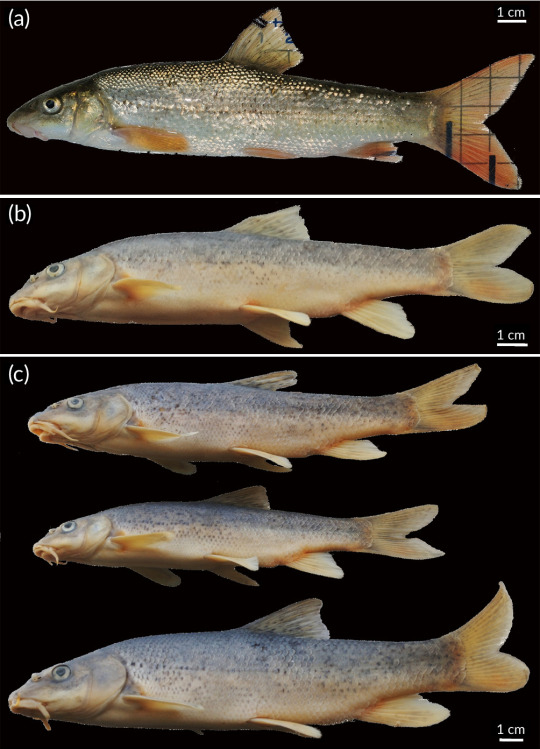
APPROFONDIMENTI
Lorenzoni, M, Carosi, A, Quadroni, S, et al. Cryptic diversity within endemic Italian barbels: revalidation and description of new Barbus species (Teleostei: Cyprinidae). J Fish Biol. 2021; 98: 1433–1449.
https://doi.org/10.1111/jfb.14688
Quadroni, S.; De Santis, V.; Carosi, A.; Vanetti, I.; Zaccara, S.; Lorenzoni, M. Past and Present Environmental Factors Differentially Influence Genetic and Morphological Traits of Italian Barbels (Pisces: Cyprinidae). Water 2023, 15, 325.
https://doi.org/10.3390/w15020325
Barbus samniticus
https://fishbase.mnhn.fr/summary/69519
Giudizio n° 3601 del 10/02/2022 - Regione Abruzzo
https://www.regione.abruzzo.it/system/files/ambiente/tutela-territorio/vinca/158156/g_3601_firmato.pdf
1 note
·
View note
Text
Hey d’you wanna know something fucked up
It’s not optional I’m telling you anyway. So coelacanths, right? Those fish dudes? Fun (not fun at all) fact: they’re more closely related to tetrapods than a vast, vast majority of extant fish. Do you know what a tetrapod is? Four legged vertebrates. Mammals, amphibians, reptiles, etc. They are closer to tetrapods than they are almost all existing fish. Here:

You see that little branch of actiinoptrygii way off, teleostei? That’s the group that about 96% of modern fish fit into.
0 notes
Text
Molecular phylogeny and systematics of the South Asian freshwater-fish genus Puntius (Teleostei: Cyprinidae)
Published 4th July 2023
Investigation on the interrelationships of the species of Puntius in Sri Lanka using molecular phylogeny.

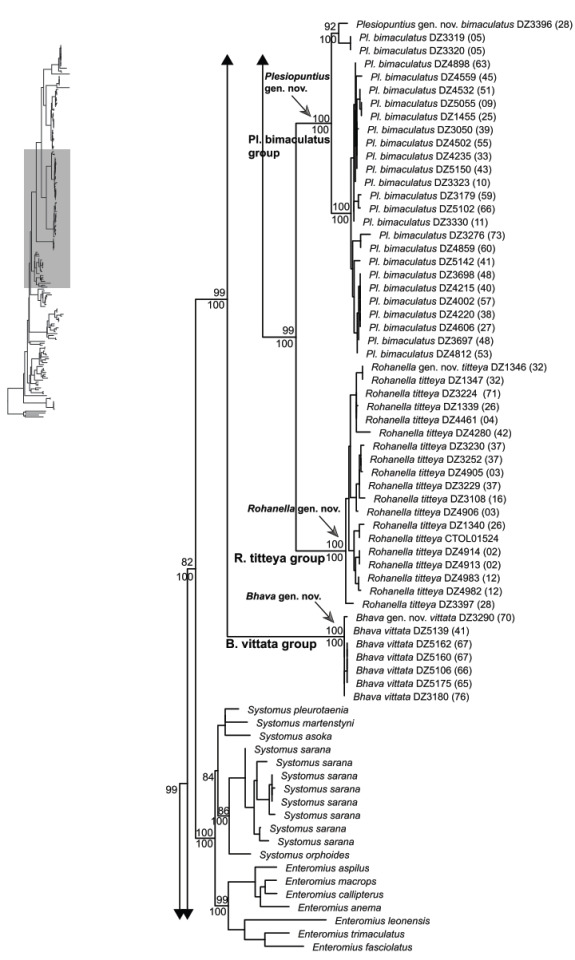

3 identified monophyletic groups that support new genera named Rohanella, Plesiopuntius and Bhava.
Puntius titteya - Rohanella

Gnathopogon bimaculatus- Plesiopuntius

Puntius vittatus- Bhava

Images from,
https://seriouslyfish.com/
Source:
https://onlinelibrary.wiley.com/doi/full/10.1111/zsc.12618
(Payment required)
0 notes
Photo

..
#fish#animal photography#lake#carp#teleostei#original photography#fisch#pale aesthetic#see#animal#tier#common carp#karpfen#pale#fische#animals#tiere#nature#natur#cyprinus#cyprinus carpio#natural history#naturkunde#pastels#pastell#pastel aesthetic
14 notes
·
View notes
Text

#Plectorhinchus lessonii#striped sweetlips#lesson's thicklip#fish#animal#ocean#marine#nature#creative commons#Haemulidae#Perciformes#Teleostei#Actinopterygii#Gnathostomata#Chordata#indonesia
2 notes
·
View notes
Photo

Leptoid scale | the particular type of scales that make up the integumentary system of Teleostei, more than 90% of the current species of “fish”.
Introducing... Garowana ! Not a Hecatia character, but actually a persona for myself, because I was lacking one. Not that it’s necessary to have one as an artist, but seeing other people’s... I wanted to give myself a face too ^^’
Garowana was born from a silly private joke between myself and four college friends during a group project. Therefore she has four comrades, and together they make up the Tegumen, defenders of justice and biodiversity~
#original#garowana#teleostei#bony fish#oarfish#fish are hard to draw oof#esp when said fish is a rare sight therefore a good ref needs some digging#pyro draws
10 notes
·
View notes
Text

Ocean sunfish (Mola mola)
Photo by brucetopher
#fave#ocean sunfish#sunfish#mola mola#mola#molidae#tetraodontoidei#tetraodontiformes#acanthopterygii#teleostei#actinopterygii#osteichthyes#vertebrata#chordata
827 notes
·
View notes
Text
The Bestiary: Cleaner Mimic
Disclaimer: While this article is founded in scientific fact, it contains hyberbole and conscious exaggerations for the sake of comedy. Do not take my ramblings at face value. You can find the sources at the end of the article and tools for scientific fact-checking under the “Learn more” link on my blog.
This, is a coral reef.
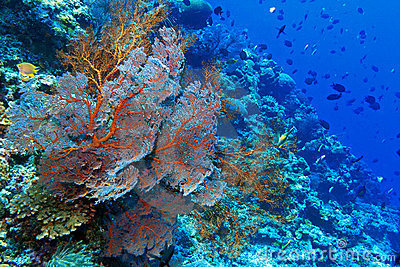
My god.
The average coral reef, contrary to most popular belief, is a damn deadly place. It’s akin to one of those kung-fu movies that feature a beautiful, classy lady clad in a traditional qipao who inevitably turns out to be the one person in the entire movie that you should definitely not have fucked with. Bladed fans are not pleasant, people.
Coral reefs are like that lady. Silk hiding steel. The steel magnolia. And several other allegories involving steel and other metallurgy products.
Don’t let the pretty coral structures fool you is basically what I’m saying here. The same laws of nature apply in the prettiest blue oceans as the ugliest swamps, because Mother Nature, creative as she may be, has no sense of human aesthetics. The most colorful ones are usually also those who will slit your throat and snatch your purse the quickest.
Take the giant moray (Gymnothorax javanicus) for example. Long and pretty colored it may be, it’s still a suicidally dumb idea to approach it without proper precautions. Its body can reach up to three goddamn meters, and it has a second set of jaws inside its mouth to pull you into its maw with.

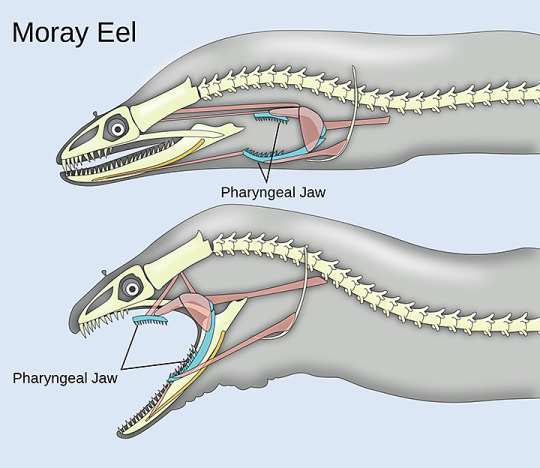
…
…No.
No, I’m not going to make another Alien reference. It’s too easy. Fuck off.
And if you think „oh it’s easy, just stay away from the cave”, it has another unpleasant surprise in stock for you: it’s got buddies. Buddies such as the roving coralgrouper (Plectropomus pessuliferus), a fuckoff huge predatory grouper that will very gladly team up with the moray to hunt your ass down if you’re sufficiently tasty-looking and sufficiently a fish. The grouper sweeps through the open water for prey while the moray mops out gaps and crevices, ensuring that you have nowhere to run. Symbiosis is a wonderful thing.

It’s like Touhou, except instead of a bunch of tiny bullets you’re expected to dodge two huge fuckin fish, and you don’t get a single Fantasy Seal. ZUN is taking notes somewhere.
I think I got my point across. Coral reefs are no laughing matter, beautiful as they may be. It’s the same fish-eat-fish world out there as in all other waters.
While our specific example here (the moray and the grouper) inhabits the pretty murderlands of the Red Sea, the same rule of thumb applies anywhere else too, such as in warm waters of the the Indo-Pacific region. This is where today’s review subjects spends its little existence of piracy and treachery on the sea.
Close your eyes for a moment and picture that you’re a humble, ordinary cleanerfish (Labroides dimidiatus).

You eke out a respectable living on the coral reefs of the Indo-Pacific in the business of (surprise, surprise) cleaning. You avoid getting your day ruined by some big mean mother fucker with teeth the size of your whole body by offering to clean the filth, dirt and the gore of your devoured fellows off of said mother fucker’s body. It’s a good business and you’re basically under a protectorate from the entire reef: nobody will eat the best guy who keeps their scales clean.
Life is all good.
Until one day your customers show up at your door with torches and pitchforks, calling for your blood, that is.
So what the hell happened, you ask? Until yesterday you were a widely popular small local business, and now everyone is calling you a cheater who exploits their trust for your own gain.
What happened is this guy.

Yo.
Grip something sturdy: no, this isn’t another picture of the same fish. Clearly some JoJo-tier bullshit is going on here.

What you just touched… was your own future self!
Meet the cleaner mimic (Aspidontus taeniatus), also known as the false cleanerfish. While not a mimic in the classic chompy treasure chest monster sense, it’s every bit as sneaky and assholish. You might think it’s just another cleanerfish, but it’s actually a clever master of some goddamn clever cloak-and-dagger disguise bullshit.
Taking on the appearance of the cleanerfish and imitating its signature “business is open” dance (spreading its fins and waving its tail up and down), the mimic now enjoys the same protectorate, since nobody would eat the dude who gives everyone regular massages and scrubdowns. It could probably live its entire life comfortably, enjoying its undeserved safety, if not for the fact that it ruins its own chances at this through an acute case of chronic backstabbing disorder.
See, it’s like this: The mimic sets up shop on some coral reef, preferably close to a cleanerfish station. This is because it needs a location which fish regularly visit for cleaning off their filthy, filthy scales. Then, this diminutive conman sets its plan into action.
The plan is simple:
Look like cleanerfish.
Act like cleanerfish.
Wait until unsuspecting “clients” show up at your place for a good cleaning.
Bite a chunk out of their fins and RUN.

HAHAHAHAHAHA FUCKING SUCKERS
Instead of a scrubbing, all the poor clients got was becoming scrubs themselves.
So you can probably see why the poor cleanerfish’s reputation thus goes downhill. Afterall, the only way to distinguish your friendly neighborhood cleaner-man from the asshole who steals your organs is by the position of their mouths, which is not what you’re normally looking at when you enter a massage salon.
The cleanerfish has its mouth on the end of its head like this:

Meanwhile, the mimic has its mouth a little underslung its head like so:

Just look at this smug little shithead. Even his face is perpetually locked in a haughty grin. If the ocean was an imageboard, the cleaner mimic would be all the smug anime girl reaction images.
That's it. That's literally it. Other than this one tiny detail on a fish that's already tiny as shit, the two are virtually indistinguishable. If it wasn't already a false cleanerfish, this guy would be a catfish instead.
So long story short, everyone on the coral reef is getting catfished big time by this guy and they take all his dirty little tricks hook line and sinker. This, of course, develops into full on drama. Blogs are deleted. Callout posts are written. Receipts are collected. And the poor bastard at the center of it all is the falsely-accused cleanerfish.

BATESIAN MIMICS DON’T INTERACT
If the local fish are sufficiently dumb, the cleaner mimic can fuck with a reef community for its entire life. Surprisingly enough, however, most local fish are not sufficiently dumb. Regular clients of the cleanerfish will learn to distinguish it from the mimic if they fall for the Nigerian prince scam enough times, and reportedly give the duplicitous little fucker a chase, forcing it to abandon its usual diet of nipped-off fins and skin for a relatively more vegetarian regimen of tube worms and fish eggs. And all because it couldn’t keep its teeth off of the locals. Good job, false cleanerfish. Good job.

And you know the worst part about this entire bullshit? If you’re a fish, and you roll up to a cleaner station to get your act tidied up, and the local cleanerfish starts working on your scales, you still can’t be sure it’s not a cleaner mimic. Because, see, the mimic only attacks its cleaning clients in about 20% of encounters. Now your weekly bathtime comes with a side order of Russian roulette. I hope you’ll have a fun time.
Of course, there is one way to know if your masseuse is in fact a mimic: if it opens its mouth and it looks like this, bail the fuck out of there. No amount of personal hygiene is worth that shit.
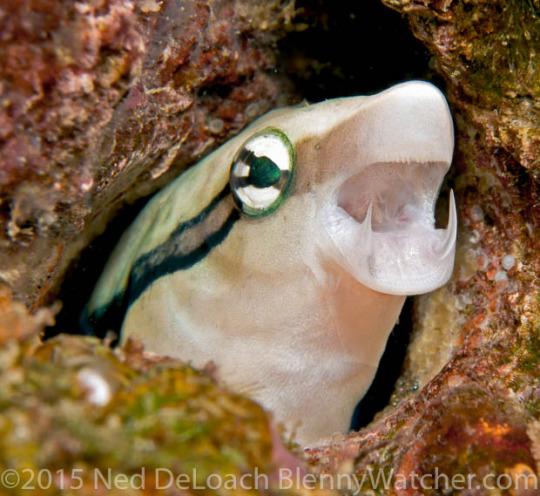
Sources
Encyclopedia of Life (EoL)
Ocean Biogeography Information System (OBIS)
FishBase
World Register of Marine Species (WoRMS)
National Geographic
Vail, Manica & Bshary. 2013. Referential gestures in fish collaborative hunting. Nature Communications.
#bestiary#biology#fish#bony fish#teleostei#perciformes#mimicry#batesian mimicry#backstabbing#tricky little shit
440 notes
·
View notes
Text
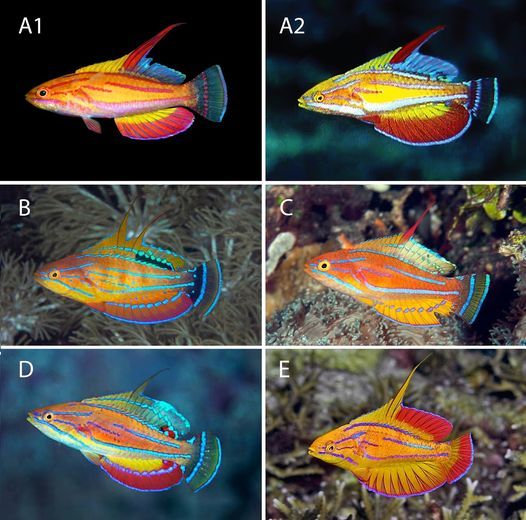
Review of Australian Species of Paracheilinus Fourmanoir (Teleostei: Labridae), with Description of a New Species from the Great Barrier Reef and Coral Sea
#FlasherWrasses
Yi-Kai Tea, Fenton Walsh
Abstract
Australian species of the cirrhilabrin labrid genus Paracheilinus are reviewed.
Four species of Paracheilinus are reported from Australian waters: P. amanda, new species, from Flora, Holmes, and Osprey Reefs, Coral Sea, off northeast Queensland, and Harrier Reef, Great Barrier Reef; P. filamentosus from Lizard Island, Great Barrier Reef; P. flavianalis from Evans and Flinders Shoals, Timor Sea, off northeast Darwin, Northern Territory, and Ashmore, Scott, Seringapatam, and Hibernia Reefs in the north-western shelf of Western Australia; and P. nursalim from Flinders Shoal, Timor Sea, off northern Darwin, Northern Territory.
Paracheilinus amanda, new species, has previously been confused for P. rubricaudalis from Melanesia, but molecular analysis of mitochondrial COI recovers both species as reciprocally monophyletic lineages, differing from each other by 1–1.2% in genetic distance.
They further differ in aspects of live coloration of terminal phase (TP) males. Both species are allopatric and do not overlap in distribution. The new species is described on the basis of six specimens: the holotype and two paratypes from Harrier Reef, Great Barrier Reef, one paratype from Flora Reef, Coral Sea, and from two paratypes collected off Hula in southern Papua New Guinea, along the north-western margin of the Coral Sea.
The discovery of P. nursalim in Australia represents a new and significant range extension from previous locality records of West Papua and Ambon Bay.
Paracheilinus is rediagnosed, and keys, diagnoses, photographs, and Australian distribution records are presented for all species herein.
Read the paper here:
Review of Australian Species of Paracheilinus Fourmanoir (Teleostei: Labridae), with Description of a New Species from the Great Barrier Reef and Coral Sea (bioone.org)
103 notes
·
View notes
Photo
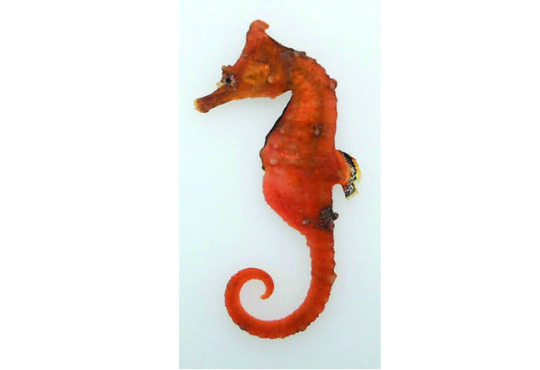
This is the Korean seahorse (Hippocampus haema), a new species of singnatid -a family of fish which includes seahorses, pipefishes, pipehorses, and weedy seadragons- This new species is described based on 140 specimens from Korea & Japan.
Scientists conducted morphological and molecular analyses on 182 specimens collected in Korea and Japan between 1933 and 2015, in order to clarify the taxonomic status of the sea horse species found in Korea and Japan waters.

- Coloration of fresh specimens, commonly found in Korean waters, previously believed to be a single especies.. A Hippocampus haema, B H. coronatus and C H.sindonis.
The korean seahorse is found in Southeastern coast of Honshu (Japan), from Izu Peninsula (Shizuoka Prefecture) to Boso Peninsula (Chiba Prefecture) where it lives in weed habitats, especially in floating Sargassum, within shallow areas (0–20 m depth).
Reference (Open Access): Han et al., 2017. Seahorses of the Hippocampus coronatus complex: taxonomic revision, and description of Hippocampus haema, a new species from Korea and Japan (Teleostei, Syngnathidae). ZooKeys.
#Hippocampus coronatus#hippocampus#seahorse#teleostei#syngnathidae#animals#biodiversity#marine biodiversity#new species#Hippocampus haema#science#sciblr#scienceblr#south korea#korea#asia
18 notes
·
View notes
Text
i do not truck with mermaid AUs as a general rule but eskel’s a roving coral grouper and you can’t change my mind
#vesemir is an alligator gar#lambert MIGHT be a wolf eel (anarrhichthys)#jury is still somewhat out on that count#geralt is a white marlin#none of them are sharks because you know what i just like teleostei better than selachimorpha#laurelnose.txt
64 notes
·
View notes